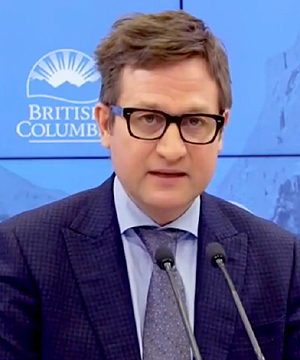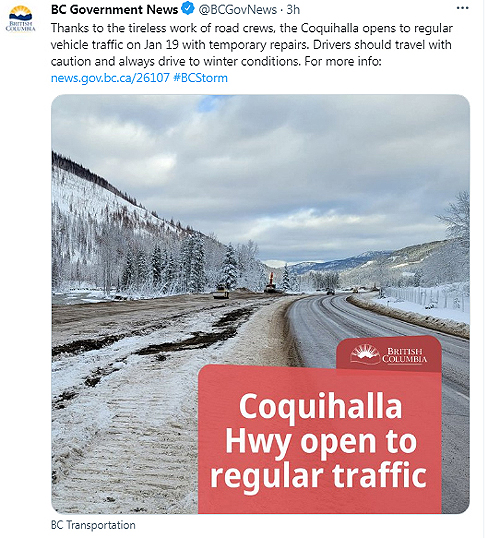
Tuesday January 18, 2022 | VANCOUVER, BC
by Mary P Brooke | Island Social Trends
After a great deal of highways repair and restoration in the BC Interior following the flooding in mid-November, the BC State of Emergency that was put into place will expire tonight January 18 at midnight.
That announcement was made by Minister of Transportation and Infrastructure Rob Fleming this morning during his 11:30 am update on highway conditions.
Highways 1, 5 8 and 99 were included in the update.
Various States of Emergency:
BC has been under various States of Emergency during the pandemic, and before that for some summer wildfire seasons.
The most recent State of Emergency included a need to ensure that supply chains could function, particularly for the distribution of fuel to gas stations and assured use of fuel for first responders and essential workers.
Infrastructure will be ‘built back better’, says Fleming, notably to withstand climate change and extreme weather events.
People and equipment:
Progress on repair and restoration of the highways has been done far more quickly than first estimated. Fleming credited that today to the commitment of everyone involved.
“The level of motivation was through the roof,” said Fleming regarding the 300 or so personnel who worked on site and “the firms working with us”.
About 140 pieces of equipment have been used for highway repair.
Highway use during repair:
For the most part, highways quickly became usable to some degree during repair, to assist with supply chain movement.
Today Fleming reminded drivers that the re-opened Highways 1, 5, 8 and 99 will not have functional EV charging stations and rest stops are closed. There are “multiple speed reductions” and in some sections of the Coquihalla there will only be 2-lane traffic (one lane for each direction).
Malahat progress:
Minister Fleming drove the Malahat section of Highway 1 on Vancouver Island this past weekend, to see how repairs had been done following the mid-November storm surge and flooding.
He was pleased to find “how functional it is”. But added that in spring weather crews will be back out there to assess how drainage systems and the highway network can be better protected during future weather events.






